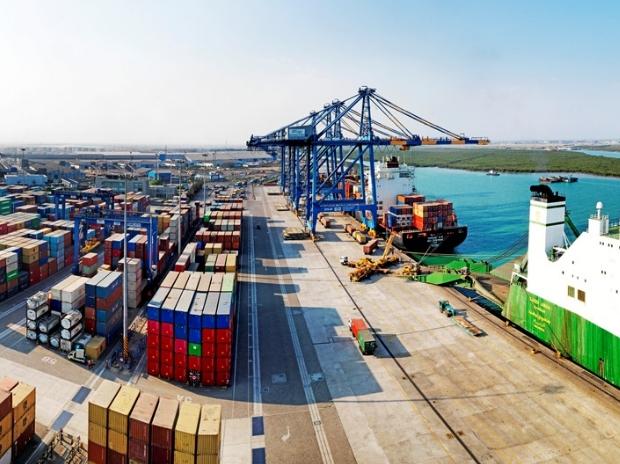-
ALSO READ
Container segment to drive growth at Indian ports Vallarpadam Port loses out to Colombo on smaller draft, higher charges Container volumes at non-major ports up 20% CAGR between FY12-17 Share of container cargo to traffic handled by major ports highest in Dec Indian ports' overall container handling trails every single Chinese port's -
Relatively smaller draft, high vessel-related charges and somewhat poor location of ports make it difficult for Indian ports, such as the Vallarpadam port in Kerala, to keep rate consistently competitive in a market where the neighbouring Port of Colombo draws higher volumes in the trans-shipment space. “Colombo is strategically located as it is situated on the main trading lane. In comparison, Vallarpadam has a difficult location and shipping lines need to travel more miles. This means, shipping lines will have to spend more time and money if they have to use this port for trans-shipment,” said Subrata Behera, manager, ports and container research of maritime consultancy firm Drewry. “Due to this, Vallarpadam has not been able to grow as a trans-shipment destination despite efforts.” Vallarpadam, also known as Kochi International Container Trans-shipment Terminal (ICTT), is located on the west coast and has draft of about 14.5 meters. This relatively smaller draft compared to the 16-metre draft of the Colombo port is another hindrance in the development of the Indian facility as a trans-shipment hub. “A shipping line engaged in trans-shipment would typically call several different sized vessels from different regions of the world to one location and create a trans-shipment hub there but for that, the size of the draft needs to be such that vessels of varied sizes should be able to move in and out. It is here where Vallarpadam takes a hit, as its 14.5-metre draft is not big enough to fit all kinds of vessels. So, even if there are only two out of seven-eight vessels of a single shipping line that do not fit into the draft, the shipping line will not make that port as its trans-shipment hub,” explained an official with ICTT. ICTT, the first trans-shipment terminal in India is part of the Cochin Port Trust and also the first container terminal to operate in a Special Economic Zone. Currently, DP World operates the terminal at Vallarpadam.  Since ICTT is part of Cochin Port Trust, the Tariff Authority of Major Ports (TAMP) governs the rate, against the Colombo port that has a more flexible pricing regime, similar to that of private ports in India. But despite the regulations, Cochin Port Trust is charging $152 per trans-shipment container, against $82 per trans-shipment container at Colombo. However, Vallarpadam is offering a discounted rate of $65 per trans-shipment container vessel, which makes it lower than Colombo, said port officials. “Discounts cannot be a long-term solution as Colombo, too, enjoys pricing flexibility and can easily offer more competitive rates,” said Behera. The rate structure of TAMP is such that its vessel-related-charges component is seven-eight fold higher compared to what Colombo has to offer.
Since ICTT is part of Cochin Port Trust, the Tariff Authority of Major Ports (TAMP) governs the rate, against the Colombo port that has a more flexible pricing regime, similar to that of private ports in India. But despite the regulations, Cochin Port Trust is charging $152 per trans-shipment container, against $82 per trans-shipment container at Colombo. However, Vallarpadam is offering a discounted rate of $65 per trans-shipment container vessel, which makes it lower than Colombo, said port officials. “Discounts cannot be a long-term solution as Colombo, too, enjoys pricing flexibility and can easily offer more competitive rates,” said Behera. The rate structure of TAMP is such that its vessel-related-charges component is seven-eight fold higher compared to what Colombo has to offer.
Industry officials said since these were audited costs taking into consideration the costs of investment and tax, these charges cannot be lowered or done away with but terminals can offer a discount. These charges are between port and TAMP, and a terminal operator is not involved in this section of costing.
Since Colombo is a trans-shipment port, its comparison with any other than Vallarpadam is not a like-to-like case. “Ports in eastern and southern India are mainly dry or liquid bulk ports and none are specific container ports, except for Chennai to some extent,” said Hitesh Avchat, senior manager at Care Ratings. About 95 per cent of Colombo’s cargo volume is trans-shipment as Sri Lanka is not a major manufacturing hub and does not have a large and direct consuming or exporting cargo. DP World set up the country’s first trans-shipment port at Vallarpadam after bagging a concession in 2004. The hinterland includes Kerala and parts of Tamil Nadu and Karnataka. But while Vallarpadam struggles to make any headway in the trans-shipment space, the Adani Ports-planned Vizhinjam in Kerala could have a lot to offer. Vizhinjam enjoys a location closest to international shipping routes. It is just 10-12 nautical miles from the busy Persian Gulf — Malacca shipping lane that accounts for almost a third of world shipping traffic. Besides, it can cater to the needs of both the west and east coasts of India. Vizhinjam has a natural depth of 18-20 metres that can allow handling of mother vessels.



RECOMMENDED FOR YOU